
I spent three years living in the Alaskan interior when I was a soldier. It was the prettiest place in the world…for about three months in the summer. The coldest it got while I was stationed there was 62 degrees below zero F. Because of the rugged inhospitable nature of the place not a whole lot of folks actually live there, relative to the rest of the country.
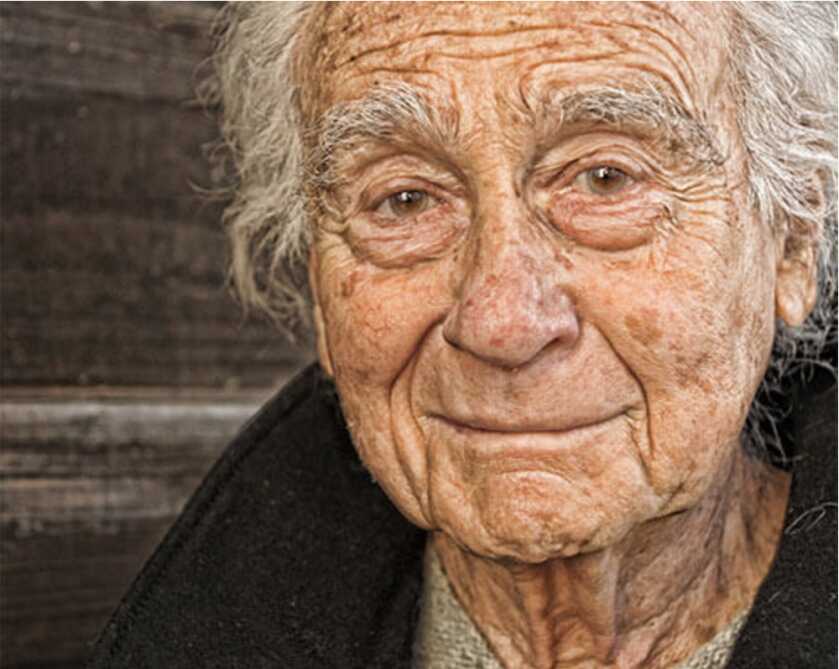
Alaska is crawling with tourists during the summer. Tourism is one of the greatest sources of revenue for the state. However, in the winter the Alaskans pretty much have the place to themselves. Back when we called Alaska home there didn’t seem to be a great many old people living permanently in the interior, either. To thrive in the arctic one has to be hearty. The remote and desolate nature of the land tends to attract some fascinating personalities.
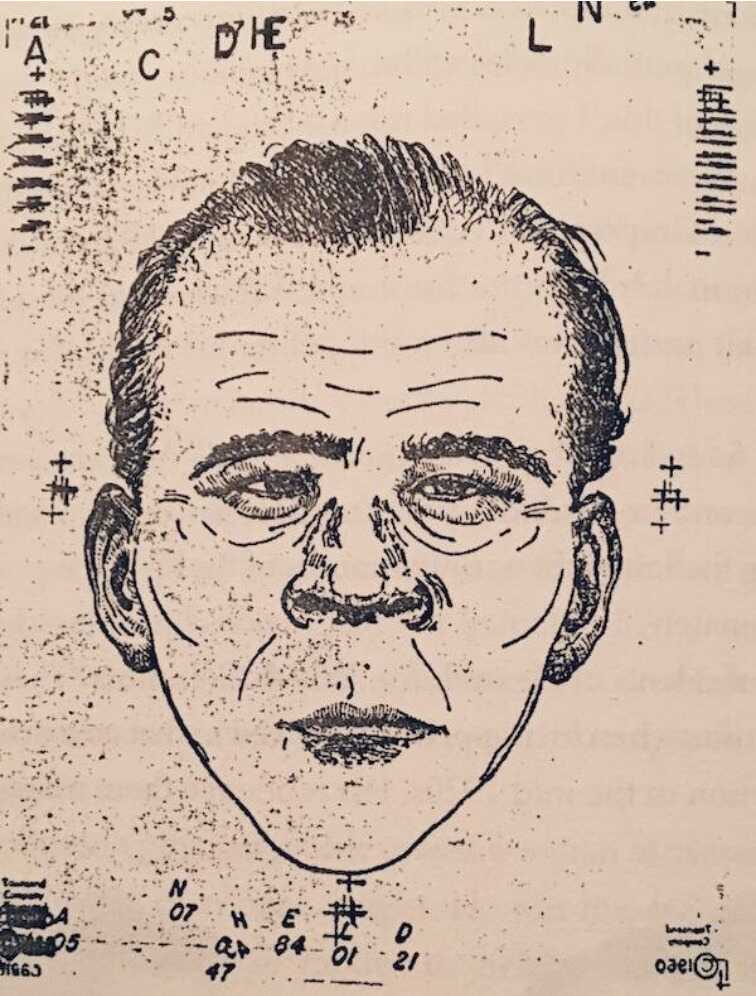
Nobody to this day really knows who Albert Johnson really was. It was estimated that he was born between 1890 and 1900 and lived under a pseudonym. In the summer of 1931 Johnson arrived in Fort McPherson, Canada, after making his way down the Peel River. RCMP (Royal Canadian Mounted Police) constable Edgar Millen had reason to question the man and later reported that he had a Scandinavian accent. He subsequently described Johnson as clean-shaven, stand-offish, and well-funded.
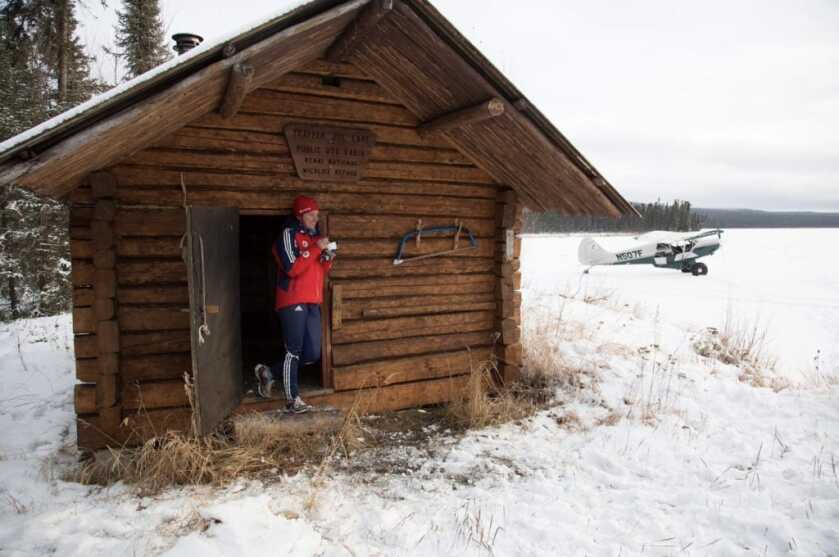
Johnson plied the Mackenzie River Delta aboard a homebuilt raft before building himself a tiny 8×10-foot cabin on the bank of the Rat River. At the time anyone wishing to trap animals for their fur was required to obtain a trapper’s license from the government. Johnson neglected to do so. A great many outsiders had come to these remote spaces fleeing the destitution of the Great Depression. Native trappers frequently resented their presence in a land they had obviously long considered their own.
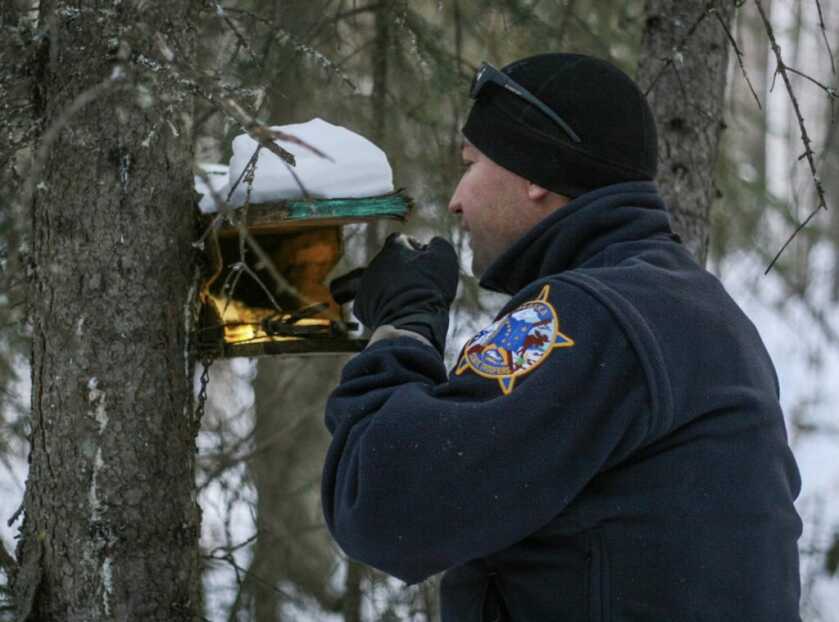
In December of 1931 local native trappers reported Johnson to the RCMP alleging that he was deactivating their traps and interfering with their livelihoods. A subsequent investigation determined that these allegations were unsubstantiated. When the natives had called on him in his cabin Johnson had run them off at the point of a gun. The guy apparently just really wanted to be left alone.
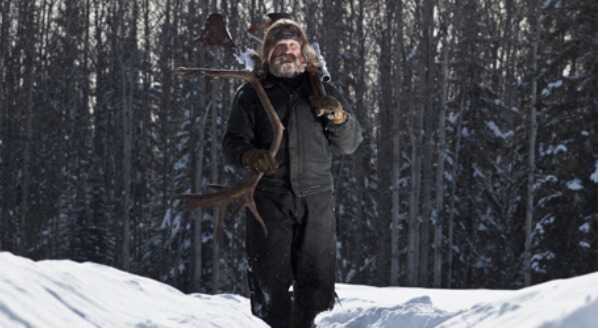
The day after Christmas a pair of RCMP constables named Alfred King and Joseph Bernard trekked sixty miles to Johnson’s remote cabin to investigate the allegations. For his part Johnson ignored the lawmen, going so far as to hang a sack across the cabin window so they couldn’t see inside. The two policemen eventually returned home in frustration to obtain a search warrant.
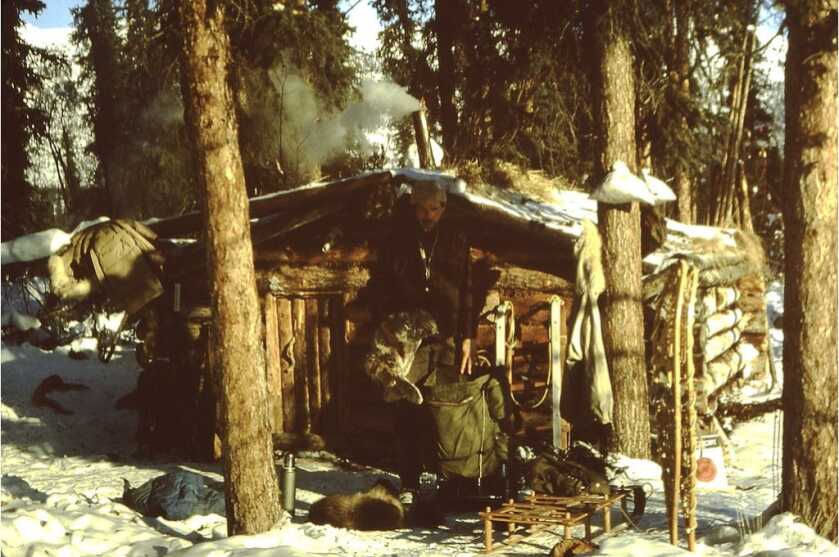
Five days later the two Mounties returned with a warrant along with two other men for backup. Johnson still refused to speak to the cops, so Constable King tried to force his way into the cabin. Johnson shot him through the wooden door for his trouble. The Mountie team successfully evacuated Constable King to Aklavik where he ultimately recovered.
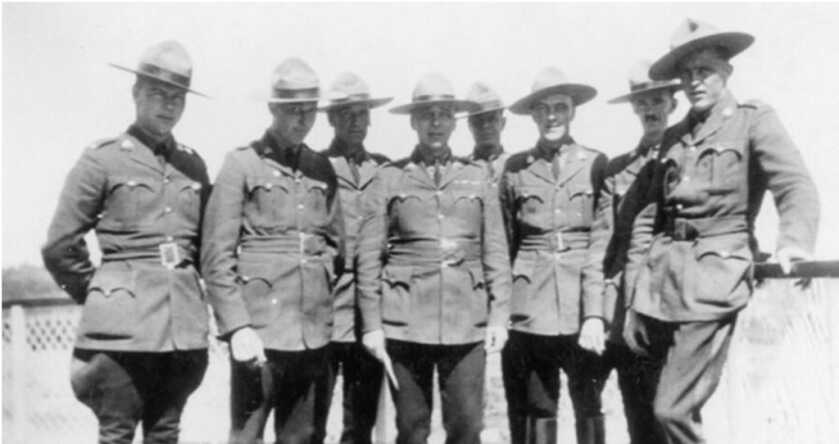
Albert Johnson had by now kicked over an anthill. Like governments everywhere, the one thing they cannot tolerate is insubordination. The Mounties therefore returned again, this time with a nine-man posse, forty-two dogs, and twenty pounds of dynamite. However, Albert Johnson had made good use of the intervening time.
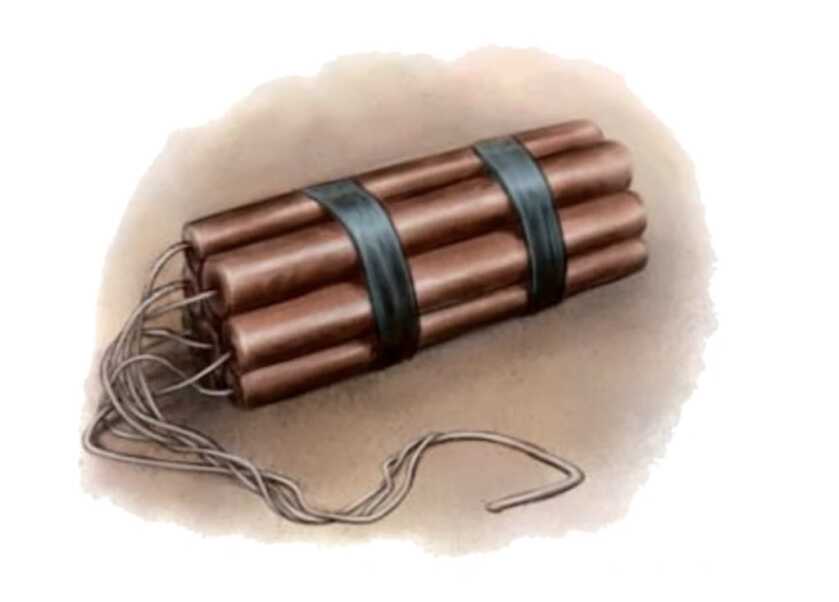
The Mounties surrounded the little cabin and demanded that Johnson come out. When he failed to do so they deployed their explosives. It was so cold the Mounties had to keep the dynamite in their coats to thaw it out.
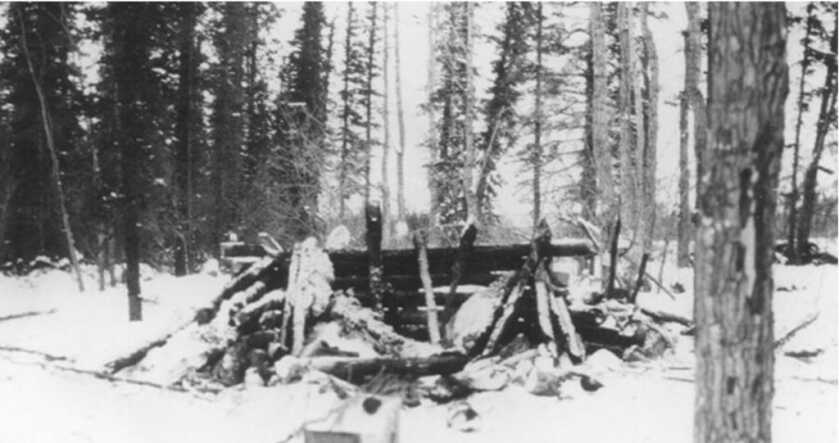
They threw the dynamite onto the roof of the cabin in an effort at flushing Johnson out. One report held that the roof was slightly damaged. Another claimed that the cabin was pretty much pulverized. Regardless, Johnson now opened fire from within a five-foot dugout he had excavated in the floor of his tiny dwelling.

Johnson and the posse exchanged fire for some fifteen hours, during which, miraculously, no one was hurt. However, it was really cold out. At -40 degrees F the cops were growing weary of this exchange. They retreated once again to Aklavik to regroup. By now word of this tidy little war had filtered out to the World via radio.
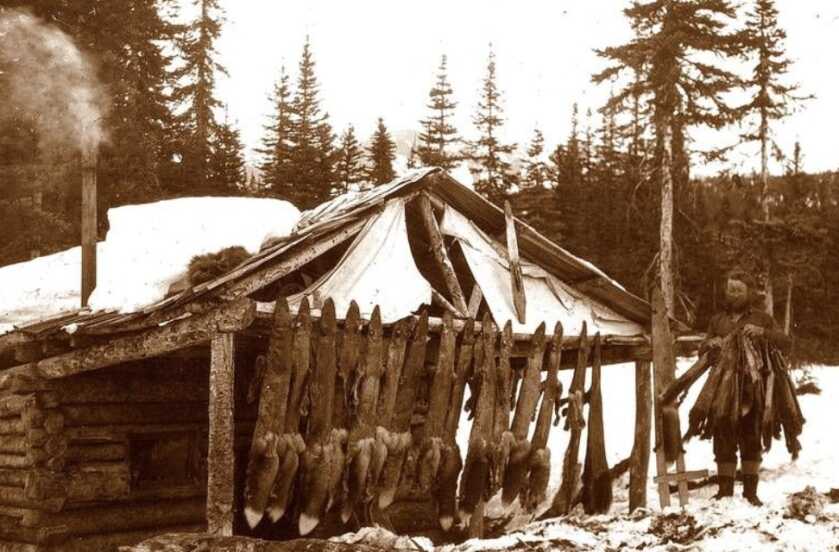
On January 14, fully nineteen days after their first quasi-amicable encounter, the Mounties returned yet again only to find that Johnson was gone. Considering they had blown his tiny cabin to hell this really should have come as no surprise. Now with ample resources and manpower the Mounties struck out after the fugitive recluse. Roughly two weeks later on January 30, they caught up to him.

The cops surrounded Johnson in a thicket, and a firefight ensued. Johnson shot Constable Edgar Millen, the officer who had first interviewed him some weeks before, through the heart and killed him. The Mounties present at the time reported that Johnson laughed heartily when he realized he had connected with the law officer. In the resulting chaos the cops retreated and Johnson escaped yet again.
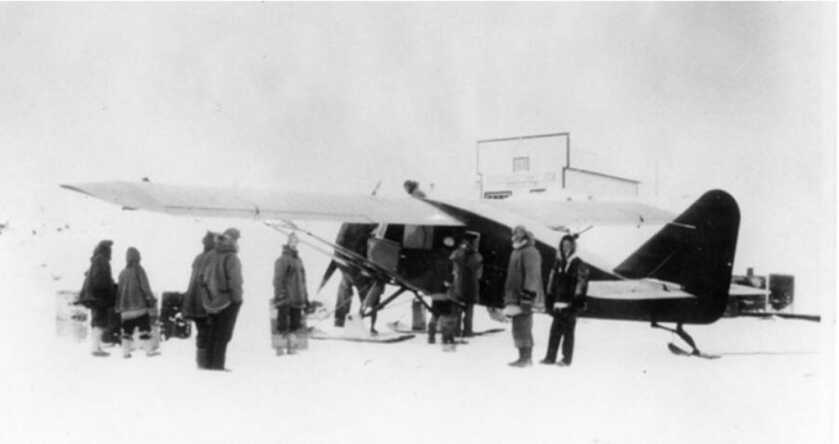
By now things were clearly getting out of hand. The Mounties enlisted the assistance of local trackers as well as the services of Wilfrid “Wop” May, a post-war aviator of some renown. May arrived with his ski-equipped Bellanca airplane to help coordinate the search from the air. The Mounties blocked the only two passes through the Richardson Mountains only to have Johnson scale a peak and escape.

The airplane turned out to be Albert Johnson’s undoing. Johnson was a skilled woodsman who would trek along caribou trails to conceal his footprints. This allowed him to move on the compacted snow quickly without snowshoes. Wop May could see that Johnson only left the track to make camp in the evenings. He coordinated with the ground team via radio and directed them along a river to Johnson’s position. By February 17 the Mounties had their man.

The posse encountered Johnson at a range of roughly two hundred yards. Johnson attempted to run, but he wasn’t wearing his snowshoes and got bogged down. In the resulting exchange of fire one Mountie was badly wounded. The law enforcement officers quickly narrowed the distance and killed Johnson at close range.
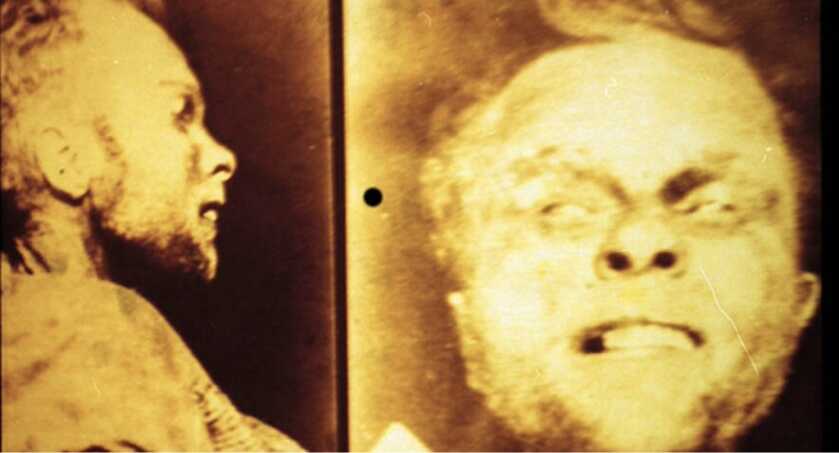
One round struck the fugitive in the left side of his pelvis, severing a significant artery. Johnson bled out in short order. Subsequent forensic analysis of his corpse showed him to have a fairly severe case of scoliosis as well as asymmetrical feet, one being markedly larger than the other. Over the course of 33 days, this gimpy little man had trekked 85 miles through the arctic wastes. Throughout the exchange, the only sound the officers had heard Johnson make was when he laughed after shooting Constable Millen.
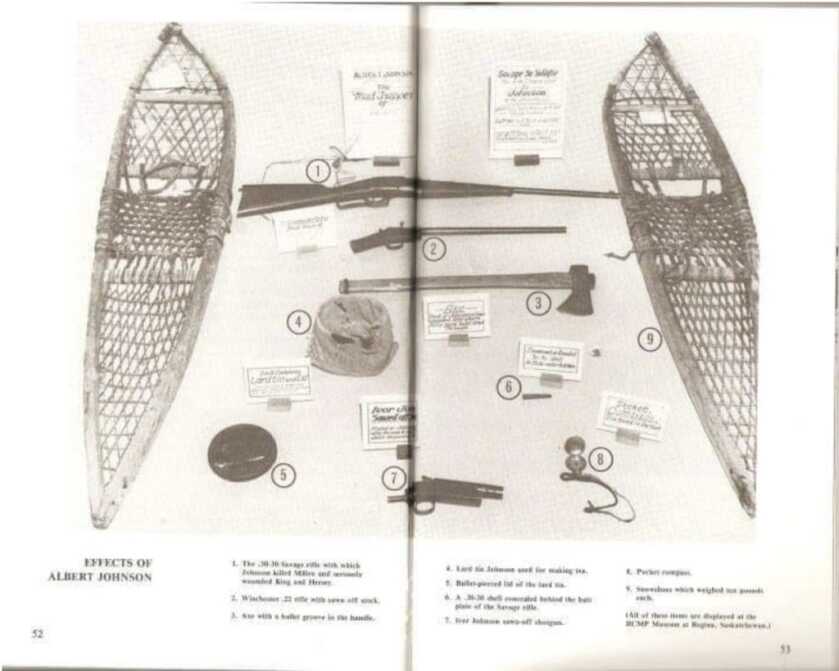
When officers searched Johnson’s body they discovered $2,000 in American and Canadian currency (about $43,000 in today’s money), a small compass, some gold, a knife, a razor, a few nails, some fish hooks, a dead bird, a dead squirrel, and a few human teeth with gold fillings that they suspected were his own. He also had an ample supply of Beecham’s Pills, a type of laxative commercially available at the time. Despite widely circulating photos of the dead man no one ever determined his identity.
The Guns
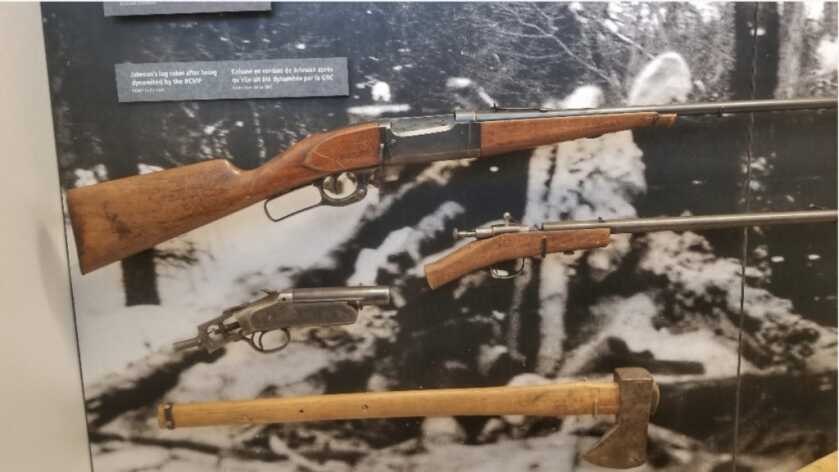
Albert Johnson had three firearms on him when he died. They included a cut-down Winchester bolt action .22, a Savage lever-action Model 99F in .30-30, and a sawed-off 16-gauge Iver Johnson shotgun. Though his identity was never definitively established, Johnson was clearly adept at running a gun.
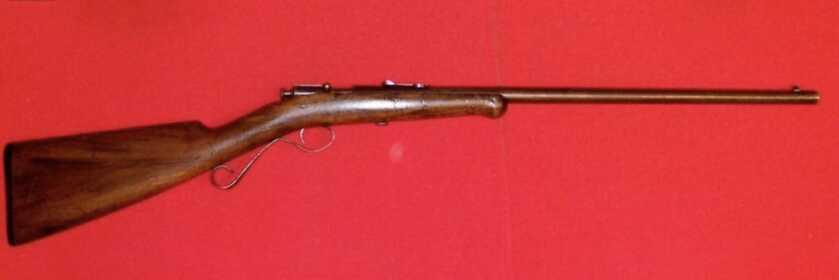
Johnson’s Winchester .22 was likely a Model 04 single shot with the buttstock cut into a pistol grip. Winchester offered a variety of these simple single-shot starter rifles over the first several decades of the 20th century. They would have made solid survival arms for securing small game.

The Savage Model 99F was a radically advanced sporting rifle for its day. Available in sixteen different chamberings, the 99F was a hammerless lever-action design that fed from a six-round rotary magazine. This made the 99F one of the world’s first lever-action rifles that could safely feed spitzer (pointed) bullets. Most rifles sporting tubular magazines can be dangerous if filled with pointed bullets that could inadvertently precipitate an unintentional discharge.
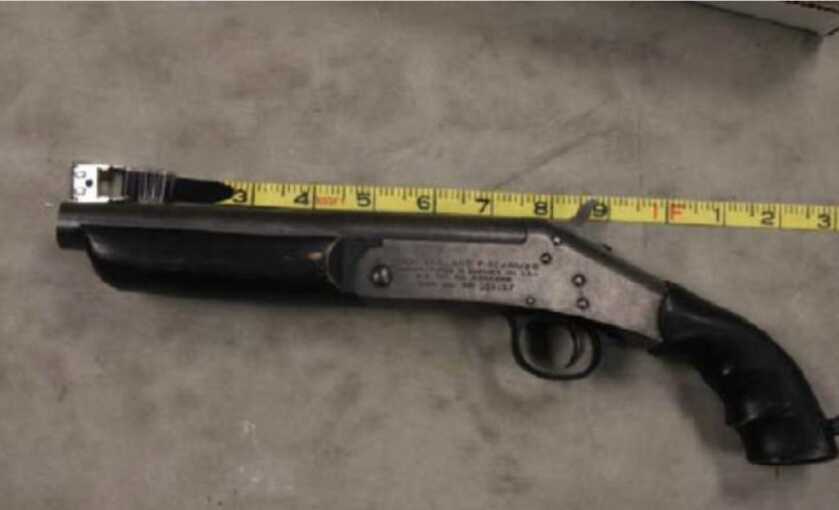
Johnson’s single-shot 16-gauge shotgun was mercilessly pruned into a tiny little handgun. Even in a modest 16-gauge chassis, this thing would have sported some impressive recoil. At under-the-table ranges, however, it would have reliably done the deed.
Ruminations
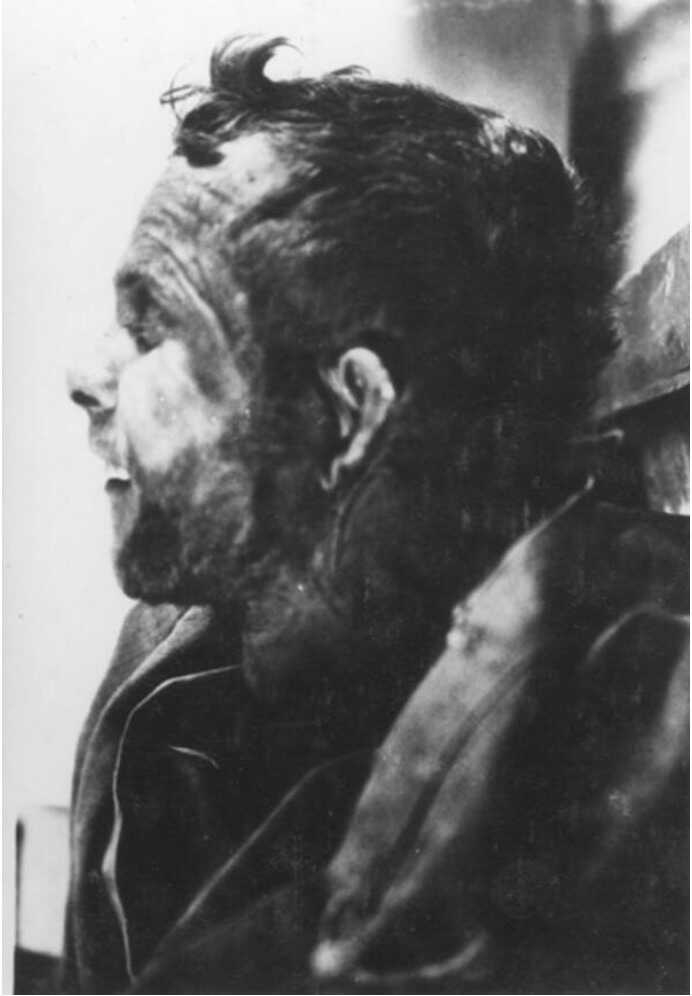
Why the heck couldn’t they have just left this poor guy alone? He lived in a cabin about the size of a large dinner table some sixty miles from civilization. He clearly just wanted to be by himself. Yet the Canadian government just couldn’t stand it. They had to hunt the man, blow his hand-built cabin to pieces, and eventually shoot him down like a dog. It’s a safe bet that no law enforcement officers would have been harmed had they just given the man some space.
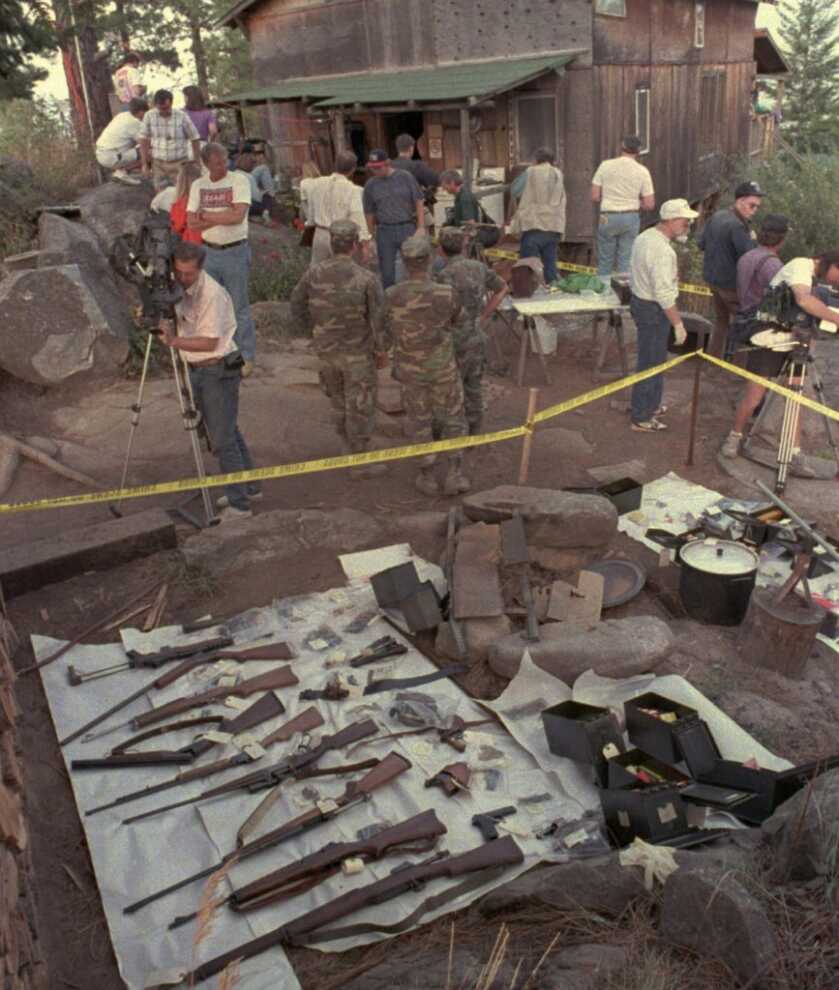
This is a ubiquitous government disease. The US government killed Randy Weaver’s wife and teenaged son over the length of a shotgun barrel. They gave him a $3 million settlement afterward, but that pile of money is likely pretty poor company on a cold winter’s night.

In a representative democracy such as ours, the only reason stuff like this ever happens is if we allow it to. We are never more than one headline away from such a tragedy even today. I love my country, but I distrust my government. Live responsibly, love your neighbors, pay your taxes, and practice responsible citizenship. However, never tolerate government overreach or abuse. The line demarcating freedom and tyranny is indeed fine. If my opinion counts for anything, sometimes I think we may already have a few too many rules.
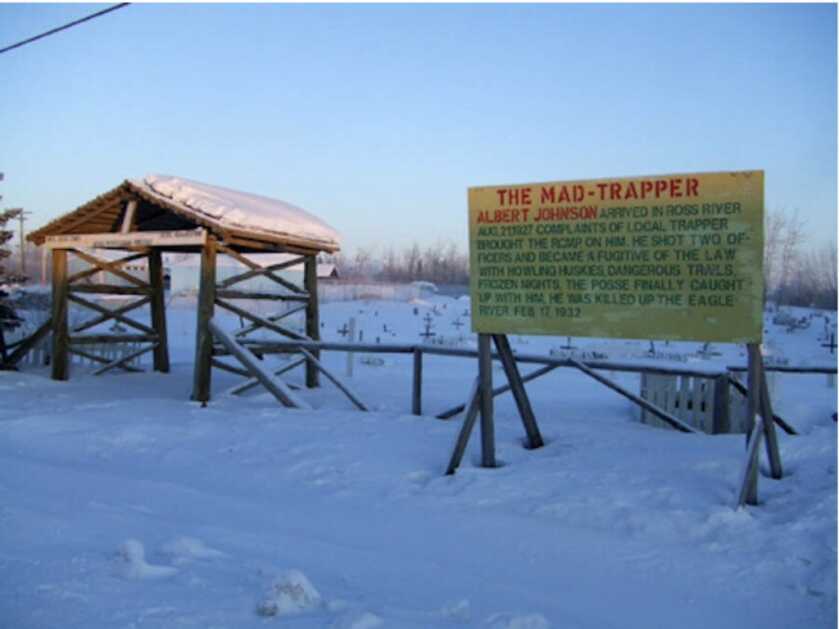


All the speak about government overreach… it appears the RCMP traveled to the trapper lodge to investigate a legitimate complaint/violation of a law. They were met with a lack of cooperation of any sort and obtained a judicially authorized warrant. Then they were met with gunfire that escalated a response from there. I’m no fan of any government abuse or unwarranted aggression, but this reads like Johnson was wholly responsible for the outcome of this situation.
He just wanted to be left alone.
Will, good article. Please consider writing one on Tex Watson a member of the Manson family. I saw him at NTSU a couple of times before he left for California.
Thanks.
Hmm. I have read quite a few books on the Rat River trapper and am not so sure Albert Johnson was the innocent you make him out to be. I agree government is way too big for its britches but if Johnson was robbing traplines thats the equivalent of a cattle rustler, and there is no sympathy for that. Somebody was robbing traplines, and while it wasnt definitively proven it was Johnson (he started the gunfight before it could be fully investigated) he was the only guy there.
We are all mad trappers now.
Thank you Dr. Dabbs for an interesting and thought-provoking article. The individuals you wrote about, Mr. Johnson and Mr. Weaver, are outliers to say the least and are not the typical example of a member of society at large, so, as with the fractious politics of today, perhaps sticking with the typical pluralistic family, or average family, in political discussions will actually lead to a considered and appropriate set of regulations and laws that are effective in maintaining peace and stability among the vast majority, and, furthermore, make sure that the laws and regulations are appropriate for understanding those that choose to be separate from the populous at large in their own way, whatever their motivations, as long as those individuals are not harming in some way other members of society. And the very wealthy, the upper 1% who are driving politics since the invention of money, are also not the average, and the laws and regulations mentioned before should consider the damage some of those individuals are doing to society at large as well, because it’s easy to pick on the poor loner, but much more difficult to get the untoward wealthy to not be antisocial in their ways, being funded by excess resources. Anyway, Dr. Dabbs, thanks again for such an interesting article! Happy Halloween!
It’s too bad the real story didn’t end like the movie! Robert Johnson gets away and one of the men chasing him for the bounty was shot in the face, becoming unrecognizable and claimed to be Johnson so they can close the case and get the reward money. I suppose in life there are few “happy endings”
Sad… if only they had left him alone. But then again, being that we don’t know what God knows or have seen what God has seen, and since we know absolutely nothing about the man except his closing chapter, we’ll just have to leave it with God to sort out the justice of the case. That aside, once again, another excellent story that proved to be thought provoking. Thank you!
This guy has got to be one of my relatives. Johnson family of my Dad’s time fought WWII, and they hunted all over the Mountains of West Virginia and Maryland. They were a tough bunch.
With all the “woke Karens” we now have, look for this type of incident to start playing out in America soon. “Red Flag Laws” are going to be the prima-facie reason that can put patriots in danger.
Thanks for sharing the real story. I’ve seen the movie a few times. It’s a given that with ever-increasing overreach, from an ever-increasingly authoritarian government, these episodes will be ever more commonplace. I bet our Founding Fathers would have rebelled (again) long ago.
There was a movie, filmed in the 1970’s that I saw as a Cub Scout. It was called ” A Challenge to be Free”. I think it was loosely based on the Johnson story.
“never tolerate government overreach or abuse.” Absolutely goddam right Will.
A movie was made about him. Charles Bronson was the trapper and Lee Marvin was the MP.Been a while since it has been on TV. Good movie.
Very good Will, thank you.
I really enjoyed reading the story of Albert Johnson. Thank You for a good read about a real man.
There’s a great movie that used this tale for inspiration. ‘Death Hunt’ with Charles Bronson and Lee Marvin. Beautiful cinematography and a cast of characters. I highly recommend.
Serious cajones…